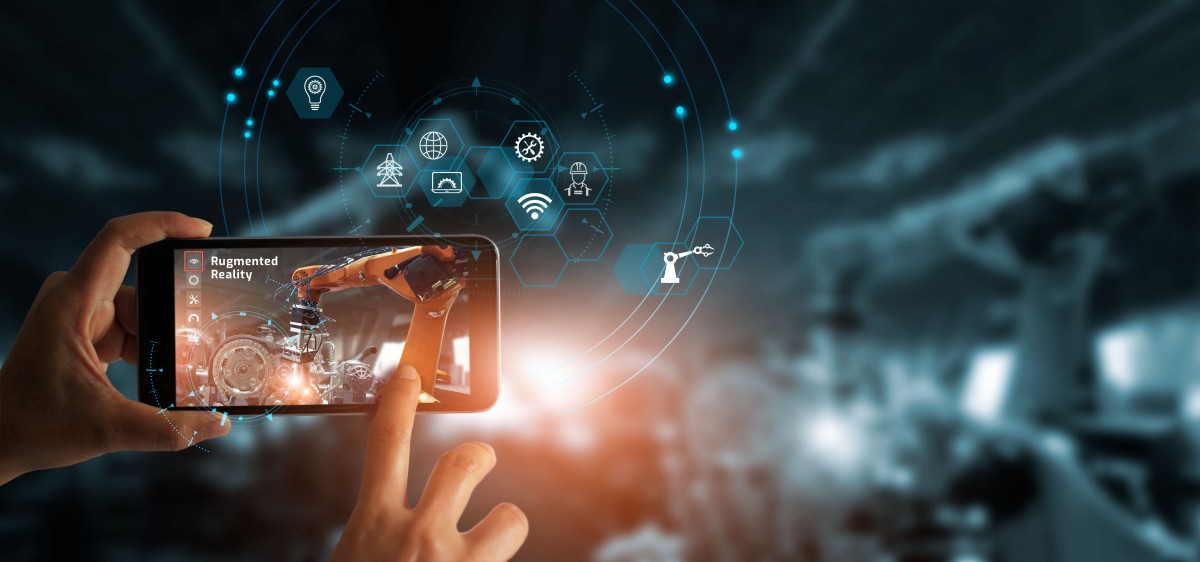Touchless Service Model: AR and VR Technologies in Providing Remote Assistance to Customers

Remote assistance augmented reality is the future of remote customer support. Customers appreciate it, businesses are eager to adopt it, and even technicians love what it offers.
In this article, we’ll delve into the expanding world of touchless service models. We’ll address how AR and VR remote assistance works, how it benefits businesses and customers, and what the future of the sector holds.
Understanding AR and VR Remote Assistance
Augmented and virtual reality remote assistance is an emerging and growing technology. It enables product experts, customer support professionals and brand agents to visually collaborate with customers and field technicians. Plus, it guides them through any issues they may be experiencing.
Originally, the concept of remote assistance arose from technicians’ programs that allowed tech professionals to temporarily view and control computers and smartphones using remote connections. These connections were facilitated online or over a local area network and are still used to solve software issues remotely.
Augmented reality and virtual reality assistance models take this concept to the next level. They use AR and video streams to link contact centers with customers’ work environments. These connections enable customer assistance agents to remotely solve hardware problems by effortlessly working between the virtual and physical spaces.
How Touchless Remote Assistance Works
Remote assistance AR pairs live video streaming with augmented reality to provide a more engaging, fulfilling customer support experience. It allows technical support agents to ask customers a series of questions and use the answers to identify problems, then to verbally explain the steps each customer must take to resolve their challenges.
In a traditional customer support context, only a few customers would be able to successfully resolve their technical issues using this method. Alas, many more would end up leaving their support calls frustrated and no closer to solving their problems.
AR remote assistance can bridge this gap and provide these customers with a more efficient way to solve their technical woes. This technology pairs live video streaming with augmented reality. The combination allows technicians to stream images and videos in real time to their own devices, using superimposed computer-generated images of a physical environment.
This innovation creates a powerful and viable solution for collaborative remote support. It’s more efficient than verbal communication alone. It visually shows the desired actions and outcomes, enabling customers to understand and perform instructions quicker and more accurately.
In simpler terms, instead of a support agent having to explain the steps a customer must take to resolve an issue, they can physically show them which steps to take using the power of AR.
The Many Applications of Remote Assistance AR
Augmented and virtual reality remote assistance models have a wide range of applications in business. They can offer futuristic technical support, resolve contracting issues, and even provide proof of billing.
When it comes to technical support, agents can use remote assistance AR and VR to rapidly identify and resolve common technical problems from anywhere in the world. They can achieve this by visually guiding customers through the steps they must take to reach a desired outcome.
This means that AR remote assistance can guide customers through how to unbox and install security devices, resolve cable wiring problems, and fix their internet connections. Or to clean and configure household appliances like electronic vacuum cleaners and smart washing machines. The use of AR remote assistance results in faster, more satisfactory support call resolutions. This leads to improved customer satisfaction as a result.
Additionally, touchless remote assistance can be put to use in field services, providing technicians with all the instructions and data they need to perform specific tasks. AR can assist technicians in gaining instant access to remote experts if needed. All while streamlining field service processes, quickly performing repairs, and communicating directly with customers
The Industries Turning to Remote Assistance AR
There are dozens of industries that are quickly adopting remote assistance AI. Consumer electronic brands, IT companies, machinery manufacturers, utility companies, and communication service providers are just a few examples. The industries that are already well on their way to fully embracing touchless service models include:
- Communication service providers. The widespread growth of the Internet of Things has seen telcos dealing with a far broader range of hardware device issues than ever before. Remote assistance ensures more efficient resolution for this range of devices. Along with cost-effective hardware replacements and customer satisfaction overall.
- Consumer electronic manufacturers and brands. Customer service agents who provide touchless service are using AR remote assistance to provide more comprehensive support for smart devices, home appliances and wearable technology. Augmented and virtual reality helps agents to better support customers throughout their device life-cycles. From purchase and installation to repairs, updates and upgrades.
- Utility firms. AR can shape and improve the way utility companies handle and resolve troubleshooting and maintenance queries. It also has the power to streamline their processing of billing inquiries, installation issues, and hazard reporting. The technology can help utilities firms to minimize their operational costs and maximize their customers’ use of smart utility devices. It also promotes in-field safety and ensures ongoing customer satisfaction.
How to Find a Reliable AR Remote Assistance Vendor
There are already dozens of augmented reality touchless assistance solutions on the market. But it’s essential to choose one that aligns with your business’s needs. Just like when you choose software for accounting, inventory, and other business and customer-facing systems, the solution you select must be wholly compatible and complementary.
It’s important to understand the features and components of a solid platform. Your chosen service must reliably connect your customer support agents and your customers with little to no friction. You should consider your platform’s delivery methods to customers, device types available, track record, and current features.
Delivery to customers via web browser is ideal, as apps require downloading and installation. This creates a barrier and slows down customers’ resolution processes. Services with browser-based solutions that work on mobile operating systems are also preferable.
The AR remote assistance technology should be available over iOS and Android smartphones and tablets, and perhaps even smart glasses and other wearable devices. Identify the devices that are most commonly used by your target audience and find a solutions provider that offers services designed for those devices.
Your touchless remote assistance platform should include CRM integration, visual agent reference libraries, embedded visual call script guidance, and customer history logs. It should boast file transfer systems, cohesive AR annotation tools, strict security protocols, and digital signatures, along with enterprise analytics and reporting capabilities.
Furthermore, it should be simple enough for both your agents and your customers to use, providing them with hands-free technology and minimizing app downloads, passwords and login requirements.
A Lucrative, Growing Marketplace
Goldman Sachs has estimated that the AR market will be worth more than $80bn by 2025. The future certainly seems bright for progressive organizations that are willing to implement remote assistance AR technology.
Even Tim Cook, the CEO of tech giant Apple, asserted during a 2020 earnings call that AR is on the path to “change everything!”












